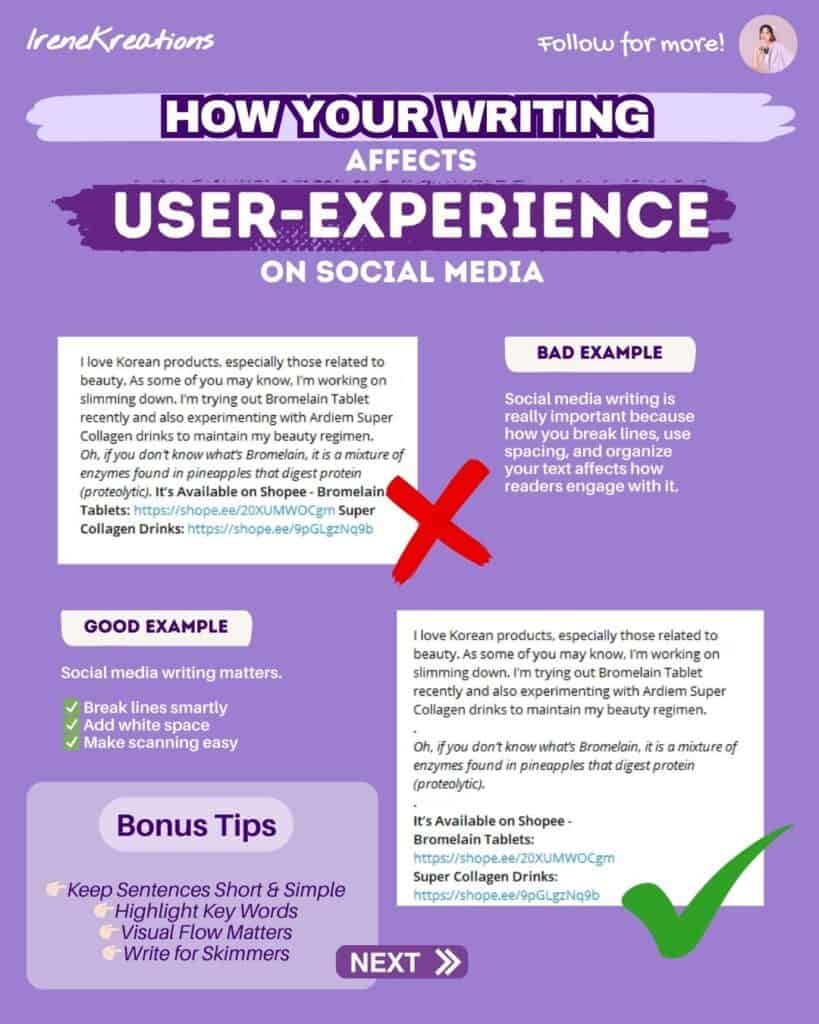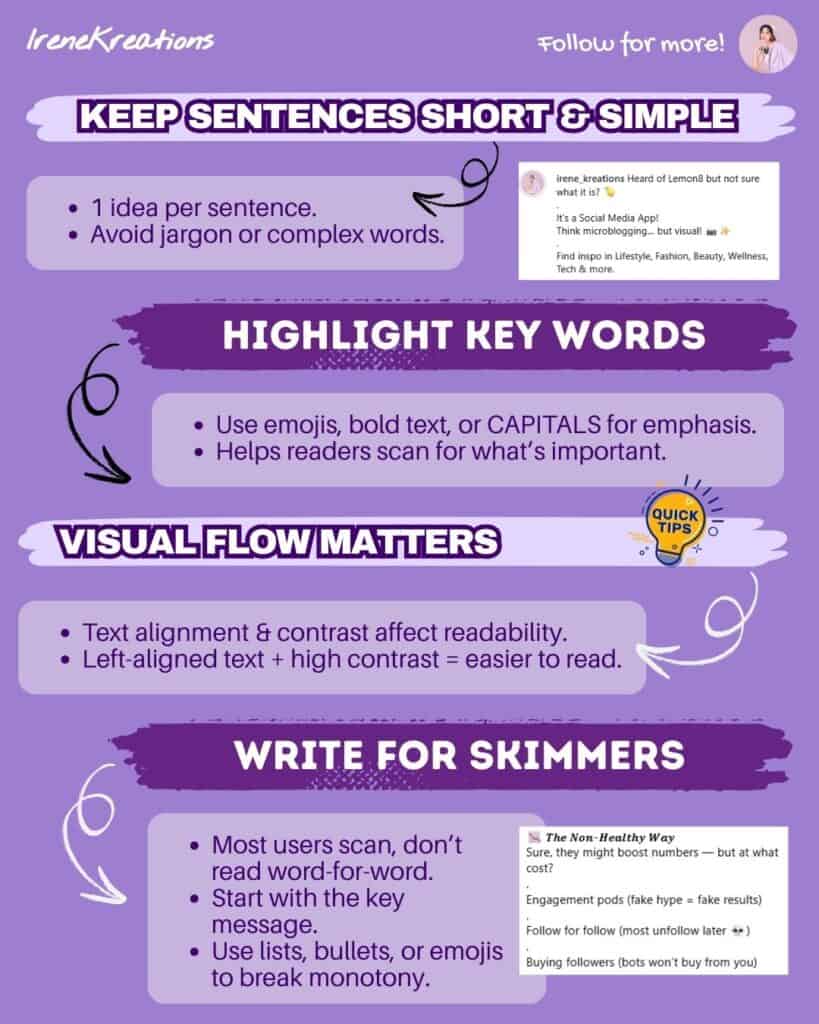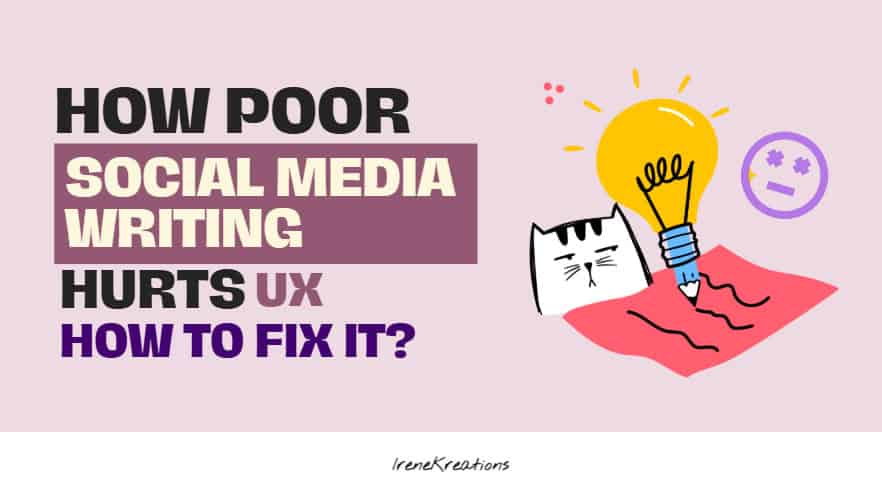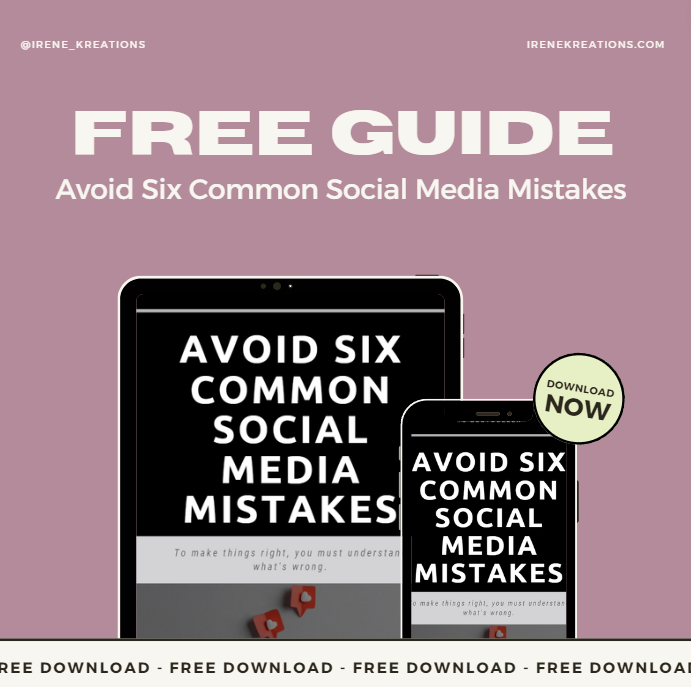Writing for social media isn’t just about words — it’s about how users read, interpret, and interact with your content.
Even the most insightful ideas can get lost if your post is cluttered, hard to read, or visually overwhelming. Poorly written social media content can frustrate readers, reduce engagement, and even damage your brand’s perception. On the other hand, writing the right way can make your posts more engaging, scannable, and enjoyable, improving the overall user experience (UX).
Why Social Media Writing Impacts UX:
Social media is different from traditional writing. Users rarely read every word. They scan for value, clarity, and visual appeal. If your content is dense, confusing, or unstructured, readers may quickly scroll past without engaging. Here’s what often goes wrong:
- Long, Dense Paragraphs
Walls of text are intimidating. Without breaks, readers get fatigued and may leave before reaching your main point. - Overloaded Sentences
Packing too many ideas into a single sentence makes it difficult to follow. Complex words or jargon can alienate your audience. - No Visual Cues
Without bullets, bold text, or emojis, scanning becomes harder. Users can’t quickly pick up the key points. - Weak Hook & CTA
If your opening isn’t attention-grabbing or your call-to-action isn’t clear, readers are unlikely to stay or engage.

How to Write the Right Way:
1. Hook Readers Immediately
- Start with a bold statement, question, or curiosity-driven phrase.
- Example: “Scrolling past yet another boring post? Here’s how to make your writing pop!”
2. Use Breaklines & White Space
- Break paragraphs into 2–3 lines.
- Leave space between blocks of text.
- Helps readers scan and digest information faster.
3. Keep Sentences Short & Simple
- One idea per sentence.
- Avoid jargon unless your audience expects it.
- Example: “Long paragraphs lose readers. Short ones keep them engaged.”
4. Highlight Key Points
- Use bullets, emojis, or bold text to emphasize important info.
- This helps skimmers quickly pick up your message.
5. End With a Clear CTA
- Tell readers exactly what to do next: “Save this tip for your next post” or “Share if you agree!”
- A clear CTA increases engagement and provides direction.
6. Mind the Visual Flow
- Left-aligned text and high-contrast colors improve readability.
- Think of the post as a mini-landing page — easy to scan and digest.

Wrong vs Right
Wrong:
“Social media writing is really important because if you don’t structure your text well, use breaks, or think about how people read, then your readers may get bored and not engage, which is why UX is affected.”
Right:
“Social media writing matters!
✅ Break lines smartly
✅ Use bullets & emojis
✅ Keep sentences short
✅ End with a clear CTA
Better writing = happier readers & more engagement.”
Writing for social media is about clarity, brevity, and visual flow.
When done poorly, it frustrates readers and diminishes engagement. When done right, it guides readers effortlessly, makes your content enjoyable to scan, and encourages interaction.
By understanding the user experience, applying breaklines, emphasizing key points, and crafting clear calls-to-action, you can transform your posts from forgettable to unforgettable. Remember: social media writing isn’t just communication — it’s UX in action.
✧⭒✦✧⭒✦◇ Ready to Level Up Your Socials? ✦⭒✧✦⭒✧
Still struggling with messy marketing or feel lost on social media? It’s time to change that. Dive into IreneKreations’ Recommended Social Marketing E-Books — a curated library filled with FREE and premium guides crafted for business owners who want real, lasting results.

From social media to content strategy and branding, these resources are your shortcut to making marketing finally make sense (and work).
Instant access. Powerful strategies. Business-ready results.








